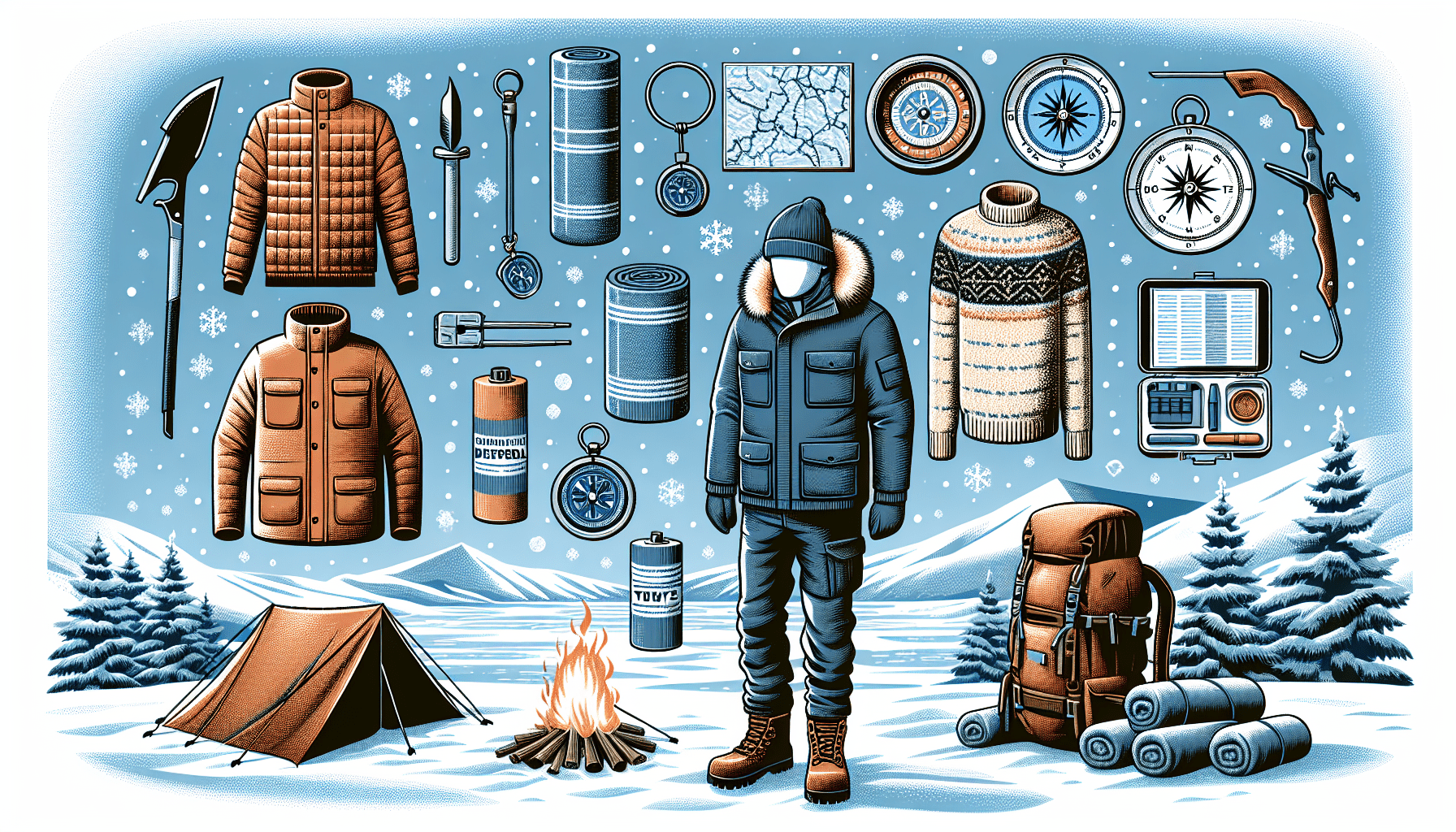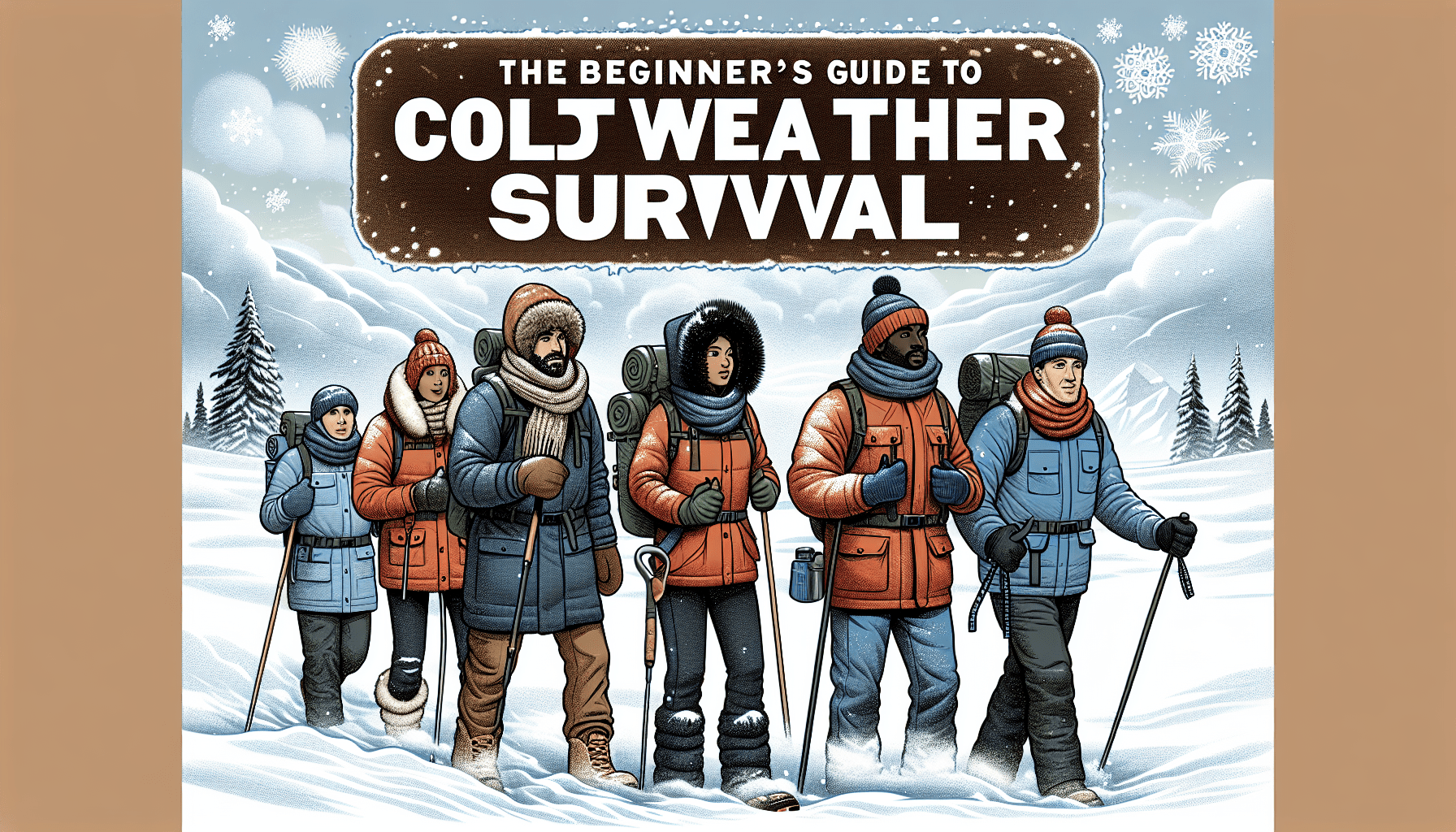Congratulations on embarking on your journey to mastering the art of cold weather survival! In this beginner’s guide, we will navigate through the essential tips and tricks that will help you stay warm, safe, and comfortable in the chilly embrace of winter. From understanding the importance of layering your clothing to mastering the art of starting a fire in frosty conditions, this article will equip you with the knowledge and skills necessary to tackle any cold weather adventure with confidence. So, grab a hot cup of cocoa and let’s delve into the wonderful world of cold weather survival together!

Understanding Cold Weather
Cold weather can have various effects on the body, and it’s important to understand them to ensure your safety and well-being. When exposed to extreme cold temperatures, your body’s internal temperature can drop, leading to hypothermia. This occurs when your body can no longer produce enough heat to counteract the heat loss.
Frostbite is another danger in cold weather. It happens when the skin and underlying tissues freeze due to prolonged exposure to low temperatures. Recognizing the signs and symptoms of these cold-related injuries is crucial for prompt treatment and recovery.
Preparing for Cold Weather
Before heading out into cold weather, it’s essential to check the weather forecast and plan accordingly. Pay attention to any warnings or advisories issued by weather authorities. This information will help you better understand the intensity of the cold and any potential risks.
Layering clothing is an effective way to insulate your body and retain heat. Start with a base layer made of moisture-wicking material to keep your skin dry. Add a middle layer for insulation, such as a fleece jacket or wool sweater. Finally, wear a waterproof and wind-resistant outer layer to protect yourself from the elements.
Proper footwear is crucial in cold and icy conditions. Choose insulated and waterproof boots that provide good traction. This will help prevent slips and falls while keeping your feet warm and dry.
Building Shelter
Having a suitable shelter is essential in cold weather survival situations. Identify potential shelter locations in the wilderness before you venture out. Look for natural protections like tree overhangs, hollowed-out tree trunks, or rock formations.
If you find yourself in a snowy environment, constructing a snow shelter or lean-to can offer adequate protection. A snow shelter, such as an igloo or snow cave, can provide insulation from the cold outside air. Alternatively, a lean-to made with branches and covered with snow or a tarp can shield you from wind and precipitation.
If you have a tent, make sure to set it up properly and insulate it. Use a groundsheet to prevent moisture from seeping in and insulate the floor with an additional layer, such as foam mats or blankets. Cover the tent with snow or a tarp to provide extra protection against the cold.

Starting a Fire
Learning how to start a fire is crucial in cold weather survival situations. Before setting out, gather dry firewood and tinder materials. Dry twigs, leaves, and small branches make excellent tinder. Look for dead trees or fallen branches, as they are more likely to be dry.
Using proper fire starting techniques is essential for success. Start by creating a small pile of tinder in the center of your fire pit. Gradually add small sticks and twigs to form a teepee-like structure. Use a fire starter, matches, or a lighter to ignite the tinder. Blow gently to promote airflow and encourage the flames to grow.
Once the fire is established, maintaining and controlling it is essential for warmth and cooking. Add larger logs to keep the fire burning steadily. Remember to always keep an eye on the fire and never leave it unattended.
Finding and Purifying Water
Water is crucial for survival, even in cold weather conditions. Identify natural sources of water, such as lakes, rivers, or melted snow. However, be cautious when gathering water from these sources, as they may be contaminated.
To purify water and make it safe to drink, consider using filtration methods. Water filters or purification tablets can remove harmful bacteria and parasites. Alternatively, boiling water for at least one minute can also kill most microorganisms.
Navigating in Cold Weather
Navigating in cold weather conditions can be challenging but necessary for survival. Learning how to use a compass and read a map is vital. Familiarize yourself with the basics of navigation, such as understanding cardinal directions and orienting the map correctly.
Identify landmarks and natural signs that can help you navigate. Look for distinctive features like mountains, rivers, or valleys. Pay attention to the position of the sun, moon, and stars, as they can serve as helpful guides.
Practicing orienteering skills in cold weather conditions is essential to build competence and confidence. Try navigating through unfamiliar terrain using a map and compass. This will help you become better prepared for any navigational challenges that may arise.
Food and Nutrition
In cold weather survival situations, packing suitable high-calorie foods is essential for energy. Opt for lightweight, non-perishable items that provide ample calories, such as energy bars, nuts, and dried fruits. These foods will help sustain your energy levels and maintain body warmth.
Hydration and electrolyte balance are also crucial in cold weather. Dehydration can occur even in cold temperatures, as your body loses water through sweat and respiration. Pack a sufficient amount of water or bring a portable water filter to ensure a safe and constant water supply.
Additionally, learning how to forage for edible plants in cold climates can be a valuable skill. Look for plants that are safe to consume, such as wintergreen, cattail, or rose hips. However, exercise caution and proper identification when foraging, as some plants can be harmful or poisonous.
Surviving Snowstorms and Avalanches
Snowstorms and avalanches are significant dangers in cold weather environments, especially in mountainous regions. Understanding the warning signs of an impending snowstorm or avalanche is crucial for your safety.
If caught in a snowstorm, take immediate action to protect yourself. Seek shelter in a sturdy structure, vehicle, or create an emergency snow shelter. Avoid traveling during the storm, as visibility and conditions can rapidly deteriorate.
Surviving an avalanche requires quick thinking and knowledge of specific techniques. If you’re caught in an avalanche, try to move to the side to avoid being swept away. If that’s not possible, cover your mouth and nose to create an air pocket. Focus on breathing steadily and wait for the snow to settle before trying to dig yourself out.
Basic First Aid in Cold Weather
Carrying a well-stocked first aid kit for cold weather emergencies is essential. Make sure your kit contains items like bandages, adhesive tape, antiseptic wipes, and pain relievers. Additionally, include supplies specific to cold-related injuries, such as thermal blankets and instant hand warmers.
Knowing how to treat common cold-related injuries like frostbite and hypothermia is crucial. If you suspect someone has frostbite, gently warm the affected area using body heat or warm water. Seek medical help as soon as possible. In cases of hypothermia, take immediate action to warm the individual by providing blankets and hot liquids. Seek medical attention promptly.
Having knowledge of CPR and rescue breathing in cold weather is also vital. In emergency situations, perform these techniques while keeping the person warm and protected from the cold elements.
Psychological Preparedness
Surviving in cold weather situations requires not only physical strength but also mental resilience. Stay calm and manage stress by focusing on the tasks at hand. Panic can impair judgment and lead to poor decision-making.
Maintaining a positive mindset is crucial for motivation and perseverance. Find ways to keep your spirits high, such as reminding yourself of the importance of staying resilient and optimistic. Use positive self-talk and visualization techniques to stay mentally strong.
Lastly, develop mental resilience and adaptability. Cold weather survival situations can be unpredictable and challenging. Embrace the opportunity to learn and grow from the experience. Adapt to changing circumstances and think creatively to solve problems.
